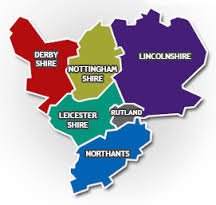If you are planning a relocation then our Moving Trends in the East Midlands will provide you with some important and interesting facts
[quote font=”georgia” color=”#000000″ bcolor=”#f48a00″]When planning a relocation one of the most difficult decisions you will face is where you are going to relocate to. There are so many great destinations within the East Midlands that it could be hard to choose. Reading our Moving Trends in the East Midlands advice will help make your decision a bit easier.[/quote]

Moving Trends in the East Midlands research shows that between 2001 and 2011 the East Midlands was the fastest growing population of all the Regions. With a population of 4.5 Million in 2011 the East Midlands account for 9% of the English population.
[icon type=”vector” icon=”momizat-icon-301″ size=”24″ icon_color=”#f48a00″ ]The population in the East Midlands grew by 8.3% compared with 7.4% for England. This is the third highest rate of growth of any English Region between 2001 and 2011. The projections predict that the regional population will increase to 4.9 Million residents by 2021.
[icon type=”vector” icon=”momizat-icon-301″ size=”24″ icon_color=”#f48a00″ ]Both Leicester and Nottingham saw an increase of around 15% between 2001 and 2011. Leicester and Nottingham are both predicted to have a 5% increase in population within the next 10 years.
[icon type=”vector” icon=”momizat-icon-301″ size=”24″ icon_color=”#f48a00″ ]In 2001 17.2% of residents in the East Midlands were said to be 65 years or over, however projections show that by 2021 this percentage will increase to 20.1% of residents being 65 or over.
[icon type=”vector” icon=”momizat-icon-301″ size=”24″ icon_color=”#f48a00″ ]Migration to the region saw an increase of the population at a rate of 26 people per 10,000 residents compared with the English average of 41 per 10,000 residents.
[button style=”shiny” color=”gray” font=”georgia” font_style=”normal” font_weight=”bold” outer_border=”true” outer_border_color=”#f48a00″]Areas in the East Midlands include: [/button]
[iconbox title=”Leicestershire” title_align=”left” content_align=”left” title_color=”#000000″ content_color=”#000000″ align=”left” type=”vector” icon=”momizat-icon-301″ icon_align_to=”box” size=”32″ icon_color=”#f48a00″ ] Leicestershire has a population of 609,578 with the largest population being in Leicester City. Other big towns in Leicestershire include Loughborough, Asby-de-la Zouch, Market Harborough, Coalville, Hinkley, Oadby, Wigston, melton Mowbray, Lutterworth, Birstall, Countesthorpe, Kegwoth and Ansty. [/iconbox]
[iconbox title=”Nottinghamshire” title_align=”left” content_align=”left” title_color=”#000000″ align=”left” type=”vector” icon=”momizat-icon-301″ icon_align_to=”box” size=”32″ icon_color=”#f48a00″ ]Nottinghamshire has a population of 729,977 with its largest population being in Nottingham City. Other towns and villages include: Beeston, Carlton, West Bridgford, Arnold, Ilkeston, Hucknal, Heanor, Clifton, Eastwood, Ripley, Stapelford, Kimberley, Sandiacre, Breaston, Ruddington, West Halalm and Awsworth. [/iconbox]
[iconbox title=”Lincolnshire” title_align=”left” content_align=”left” title_color=”#000000″ align=”left” type=”vector” icon=”momizat-icon-301″ icon_align_to=”box” size=”32″ icon_color=”#f48a00″ ]Lincolnshire is reported to have a population of around 100,000 people and is said to increase during the summer months. Lincoln City and Boston have the highest populations. Other areas include : Grantham, Spalding, Skegness, Gainsborough, Stamford, Louth, Bourne, Mabelthorpe, North Hykeham, Sleaford, Holbeach, Deeping St. James, market Deeping, Horncastle, waddington, Long Sutton, Cleethorpes, Humberston and Scunthorpe. [/iconbox]
[iconbox title=”Northamptonshire” title_align=”left” content_align=”left” title_color=”#000000″ align=”left” type=”vector” icon=”momizat-icon-301″ icon_align_to=”box” size=”32″ icon_color=”#f48a00″ ]Nderbyshire, leicester city, derby city, nottingham city, lincoln city, boston, had a population of 212,100 in 2011. With Northampton having the largest population other ares include: Abington, Billing, Boothville, Brookside, Castle, Delapre and Briar Hil, East Dunsbury, Eastfields, Headlands, Kings Heath, Kingsley, Kingsthorpe, Nene Valley, New duston, Old Duston, Park, Parklands, Phippsville, Rectory farm, Riverside, Spencer, Spring park, St. Davids, St. James, Talavera, Trinity, Upton, Westone[/iconbox]
[iconbox title=”Derbyshire” title_align=”left” content_align=”left” title_color=”#000000″ align=”left” type=”vector” icon=”momizat-icon-301″ icon_align_to=”box” size=”32″ icon_color=”#f48a00″ ]Derbyshire has a population of 770,600 with Derby City being the most populated. Other towns include, Alfreton, Alton, Ashbourne, Ashton, Bakewell, Bramford, Belper, Birch vale, Blackwell, Breaston, Brimington, Caldwell, Clifton, Chunal, Denby, draycotte, Foston, Hazelwood, Heanor, Holloway, Hopton, Ironville, Kilburn, Langley, Langley Mill, Longcliffe, Mapelton, Mapperley, Newbold, Shuttlewood, Stavely, Swadlingcote, Tansley, Tupton, Twyford, Walton on Trent, Woodthorpe, Woodville and Youlgreve.[/iconbox]
[callout color=”#000000″ border=”#f48a00″ font=”georgia” fontsize=”20″ bt_content=”Contact Us” bt_pos=”right” bt_style=”shiny” bt_color=”gray” bt_link=”https://mnmremovals.co.uk/contact/” bt_target=”_blank” bt_font=”georgia” bt_font_style=”normal” bt_font_weight=”bold” bt_outer_border=”true” bt_outer_border_color=”#f48a00″ bt_icon=”momizat-icon-127″ bt_icon_color=”#f48a00″]For all of your Relocation needs throughout the East Midlands[/callout]





Leave A Comment